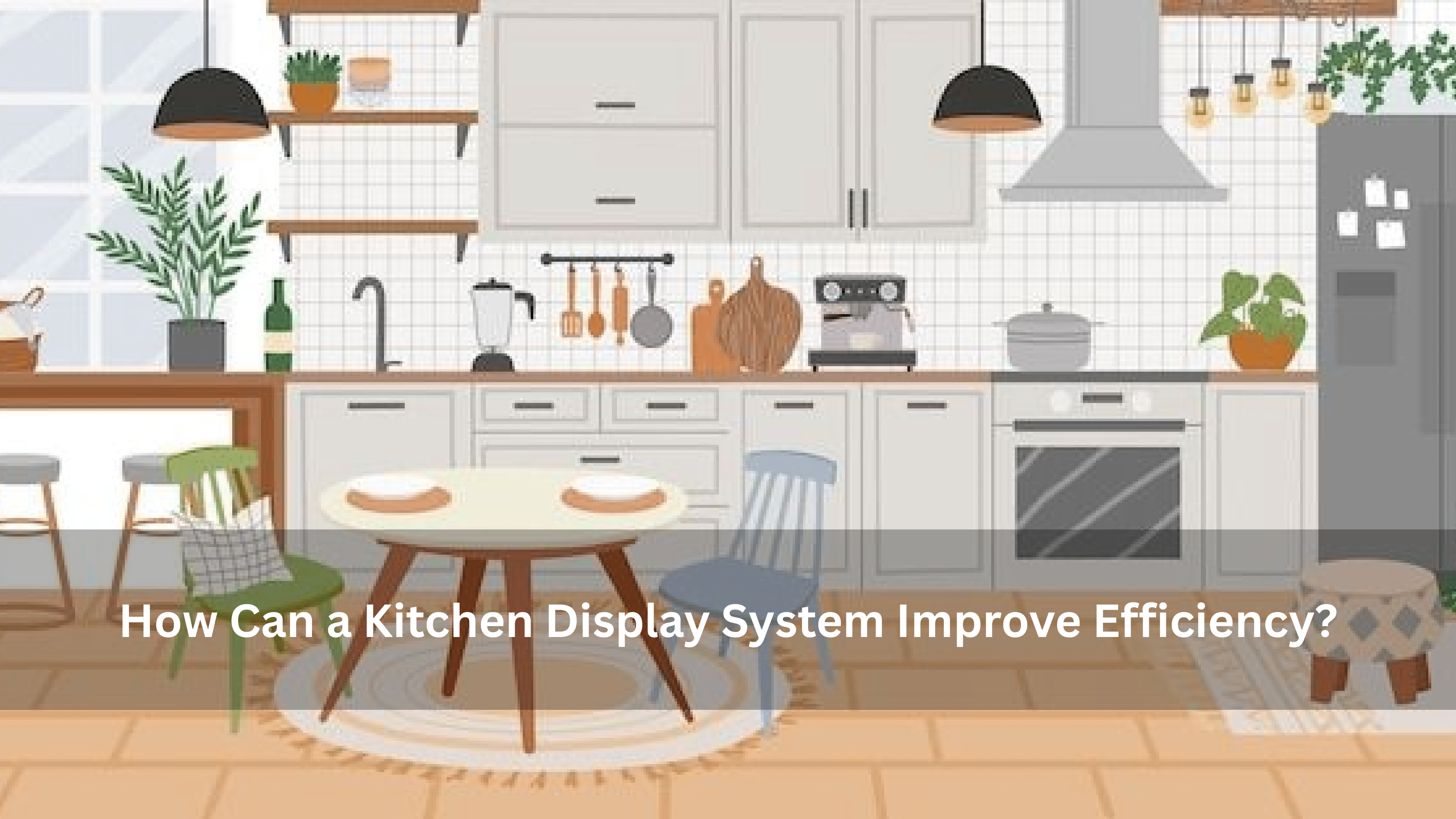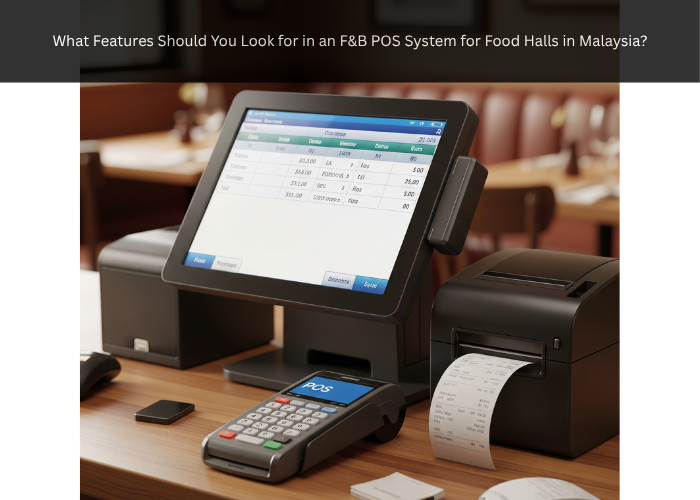The fast-paced world of food and beverage service demands precision, speed, and effective communication between the front of house (FOH) and back of house (BOH). Traditionally, handwritten or printed kitchen tickets have served as the go-to method for managing orders. However, these manual methods often lead to delays, miscommunication, and errors—especially during busy hours.
Enter the kitchen display system (KDS): a digital solution that replaces paper tickets with real-time digital order displays in the kitchen. Used by restaurants, cafes, food courts, and even cloud kitchens, a KDS has proven to be a game-changer in improving kitchen efficiency, streamlining workflows, and boosting customer satisfaction.
In this comprehensive guide, we explore how a kitchen display system works, its impact on efficiency, its key features, and how you can implement one in your business for long-term success.
What is a Kitchen Display System?
A kitchen display system is a screen-based digital order management system used in commercial kitchens. It shows orders in real-time from the point of sale (POS) system, allowing kitchen staff to view, prioritize, and fulfill orders efficiently without relying on printed or handwritten tickets.
Main Components of a Kitchen Display System:
Digital screens or tablets mounted in the kitchen
KDS software that integrates with your POS
Touchscreen or physical controls to mark order status
With a KDS, the traditional workflow of waiting for a ticket printout is replaced by instant digital communication.
How a Kitchen Display System Works in Real-Time Operations
Understanding how a kitchen display system works is crucial to seeing its value. Here’s a typical process:
Workflow:
Customer Places Order via POS, mobile app, or kiosk
Order Sent to Kitchen Display System, routed to the correct prep station
Kitchen Staff Views Order, organized by time or priority
Order Status Updated as preparation progresses
Completed Orders Marked Ready for pickup or delivery
Performance Metrics Tracked for analytics and reporting
This real-time flow eliminates the risk of miscommunication and accelerates food preparation.
Key Benefits of a Kitchen Display System in Food Service
The main reason to implement a kitchen display system is to improve kitchen operations and customer service. Here’s how:
Enhanced Communication
Eliminates unreadable handwriting
Instant FOH-BOH sync
Reduces miscommunication
Better Order Accuracy
Orders auto-routed to proper stations
Clear display of modifiers and special requests
Faster Kitchen Workflow
Orders appear instantly
Less waiting for printouts
Improves turnaround time
Reduced Waste and Cost
Less paper usage
Fewer food mistakes and remakes
Optimized resource usage
Improved Staff Efficiency
Easier multitasking with visual aid
Customizable screens per station
Real-Time Monitoring
Track prep times and delays
Analytics for kitchen performance
Must-Have Features in a Kitchen Display System
Not every KDS fits every operation. Here are essential kitchen display system features to look for:
POS Integration – Syncs with your sales platform and online orders
Smart Order Routing – Automatically sends orders to appropriate stations
Order Timers – Highlights pending orders with color-coded urgency
Interactive Displays – Touchscreens, bump bars, or foot pedals for hands-free updates
Custom Views – Filter by station, food type, or order source
Offline Mode – Keeps working even without internet, syncing later
Analytics & Reporting – Tracks prep time, errors, and peak-hour efficiency
These features ensure the system adapts to your unique workflow.
Real-World Use Cases of Kitchen Display System in Malaysia
See how restaurants in Malaysia have benefited from using a kitchen display system:
Fast Food Chain – Kuala Lumpur
Problem: Long queues, missed orders
Solution: Integrated KDS with mobile ordering
Result:
35% faster order prep
50% fewer mistakes
Boosted staff morale
Noodle House – Penang
Problem: Incorrect custom orders during peak hours
Solution: Customized KDS showing modifiers clearly
Result:
90% fewer wrong orders
40% increase in customer satisfaction
These examples highlight how KDS solutions transform kitchen operations.
Kitchen Display System vs Traditional Kitchen Ticketing
Let’s compare the old and new ways of managing kitchen orders:
Feature Traditional Tickets Kitchen Display System Speed Manual, slower Instant digital updates Accuracy Risk of errors Clear, precise instructions Modifications Easily missed Clearly displayed on screen Waste Uses printer paper Paperless Reporting Manual logging Automated analytics Operational Cost Higher (paper & printers) Lower over time (cloud-based) Clearly, the kitchen display system wins in every category.
Tips for Implementing a Kitchen Display System Successfully
To successfully deploy a kitchen display system, follow these practical tips:
Best Practices:
Train FOH and BOH teams thoroughly
Start with one or two kitchen stations first
Customize layout to kitchen zones
Test during non-peak hours
Collect feedback and adjust
Key Metrics to Watch:
Order prep time before vs after KDS
Staff errors and food remakes
Kitchen staff adaptability and user feedback
These strategies will help maximize your investment.
Common Kitchen Display System Challenges and Solutions
Even the best systems have obstacles. Here’s how to overcome the most common issues with a kitchen display system:
Challenge Solution Resistance from staff Provide hands-on training and show the benefits Weak internet connection Choose a KDS with offline sync capability Incompatible POS Use a KDS known for seamless integration Complex interface Simplify views and station-specific customization Anticipating challenges ensures smoother adoption across your restaurant.
Final Thoughts: Is a Kitchen Display System Right for You?
If you’re running a busy food establishment, adopting a kitchen display system is one of the smartest decisions you can make. It optimizes communication, reduces mistakes, improves kitchen flow, and enhances customer experience.
Whether you’re managing a small cafe or a multi-branch restaurant chain, the benefits of a KDS extend far beyond digital screens—they contribute directly to your bottom line.
organization, and professionalism.









